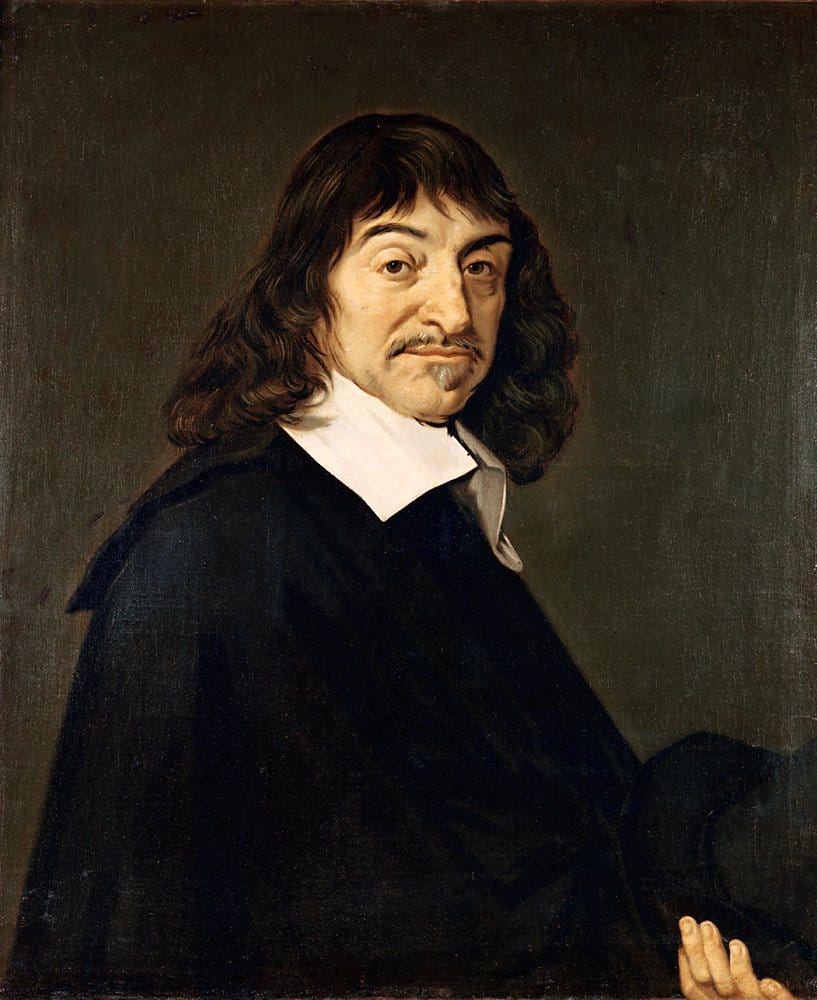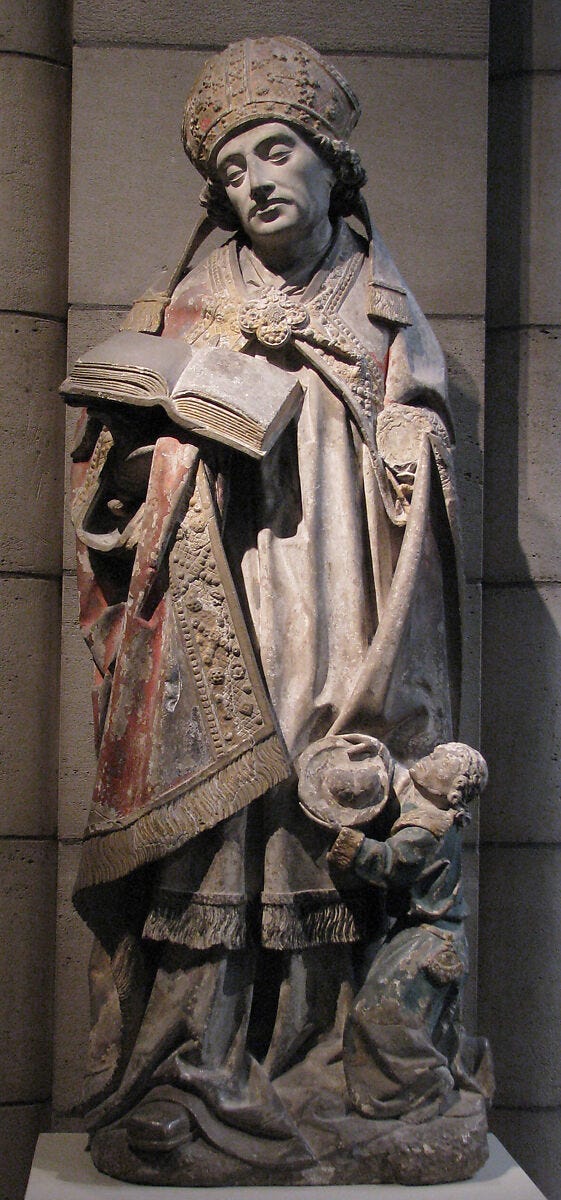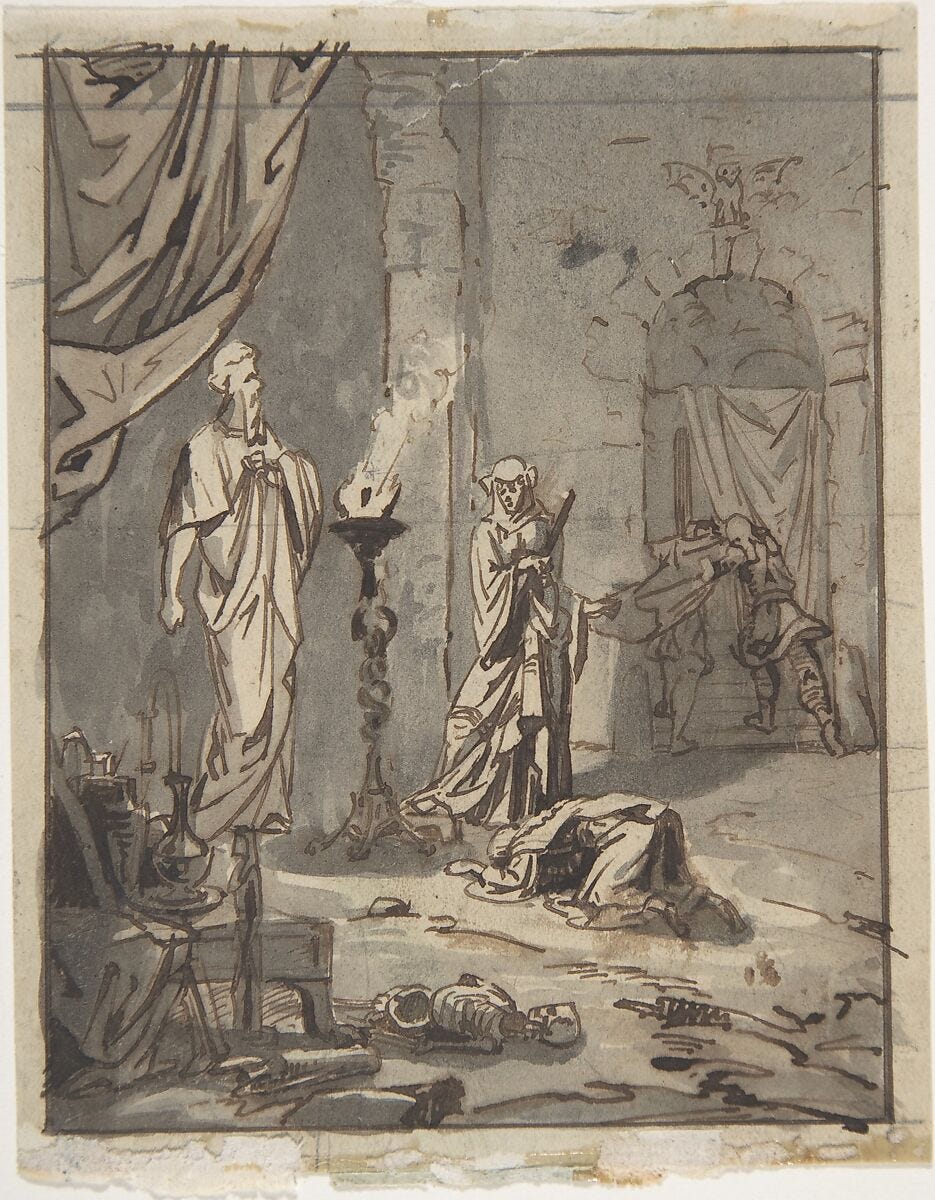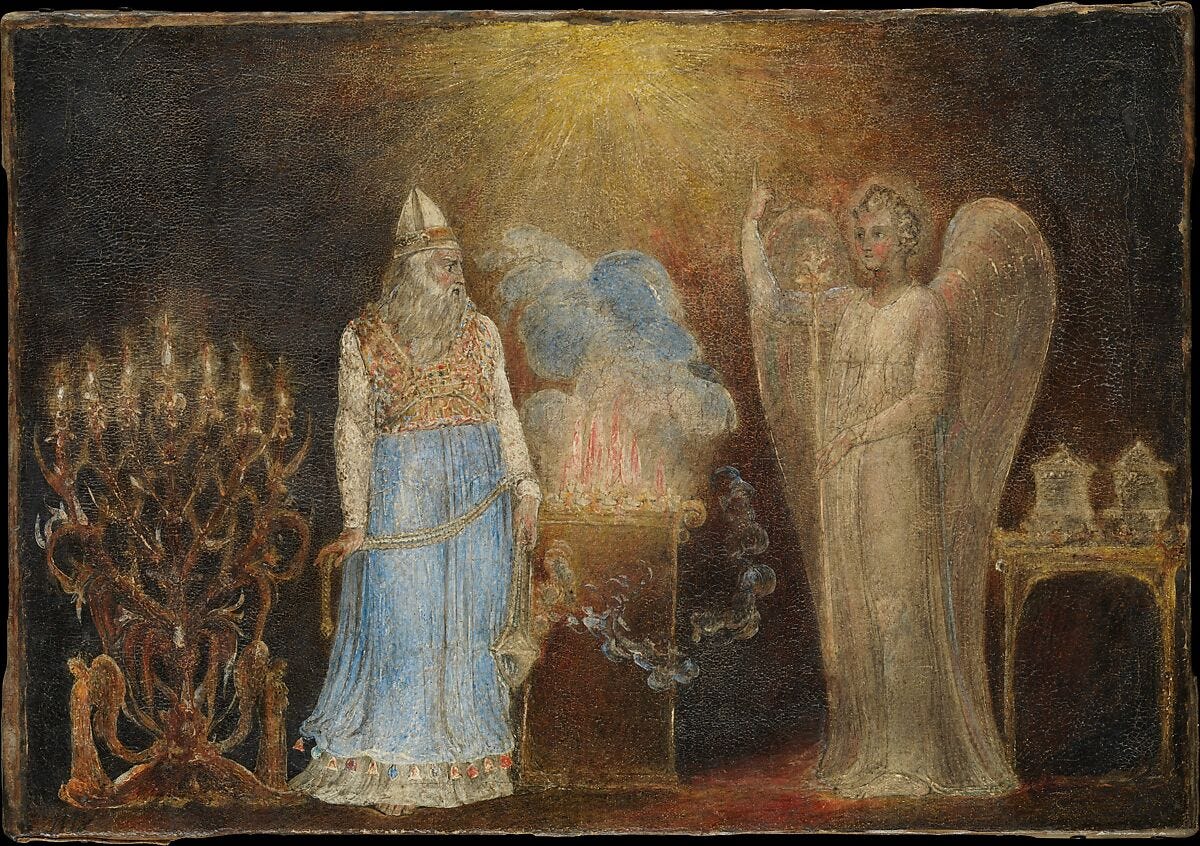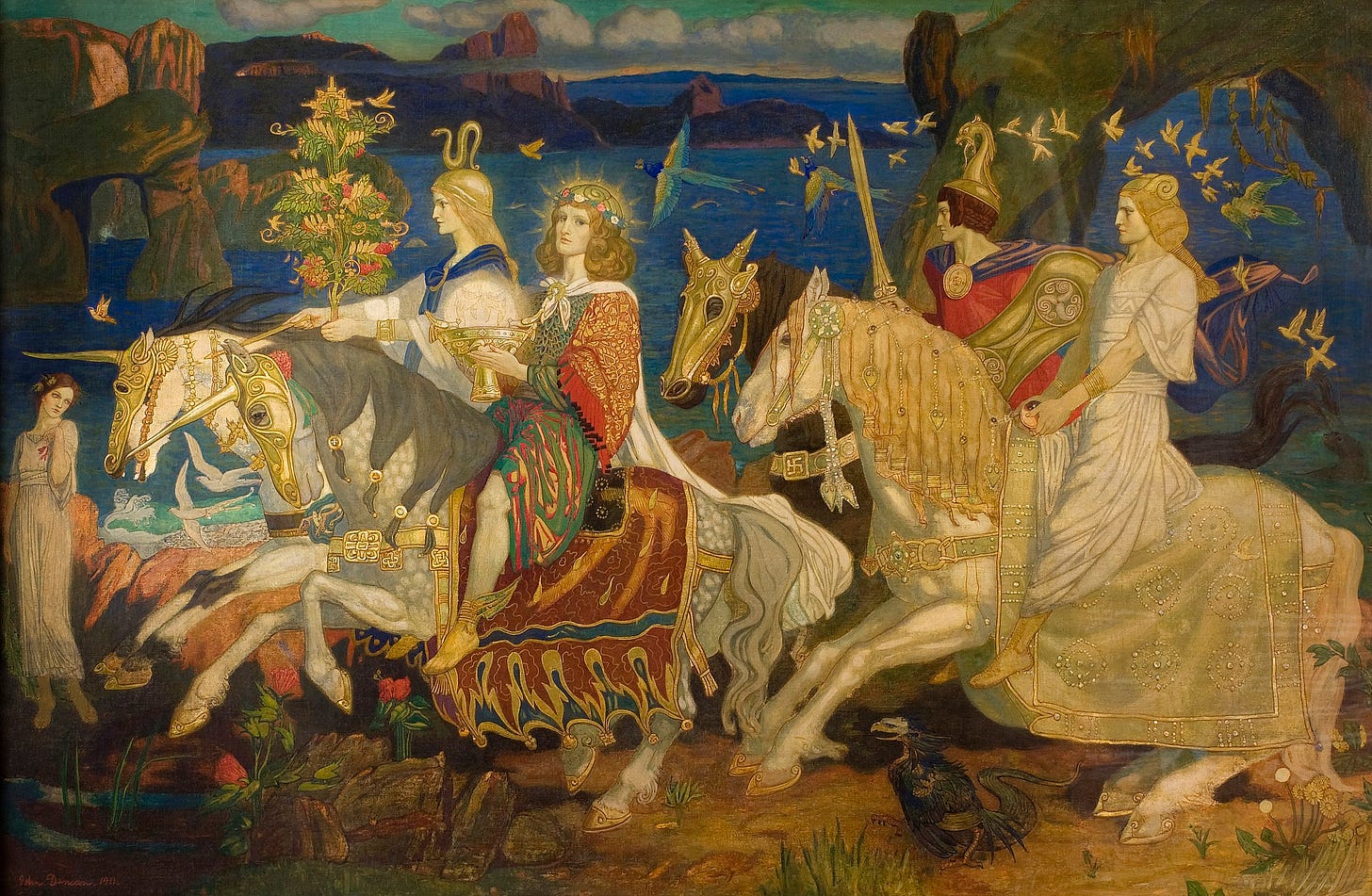Mechanical Magicians
Witchcraft and the Prophecies of the Machine Age
What do you believe?
If you practice magic, which most of the people in the heathen troupes I travel in do, then that question can be a complicated one. Many of the priests and priestesses I worship and work with in my tradition came to this path because they were working out for themselves what they believe, going beyond received doxa and looking for some other taste of revelation—for noesis.
They were looking for a third way, often, between two poles that seem to dominate every landscape of thought. At one pole is dogma, and the religious certainty of an increasingly nationalistic and hateful collection of religious groups. That pole manifests as dangerous superstition and ugly, unquestioning zealotry. It also manifests as boring liturgies and rote prayers, when done poorly. At the other pole is a purely rational—so it claims—approach to belief, answering to the bracing clarion call of the Enlightenment, but rooted ultimately in a rather nihilistic materialism, or physicalism if you prefer.
That is no lovely choice for most seekers, to choose between a stultifying church house and the grisaille of nihilistic, materialistic modernity. It feels like a choice between the proverbial frying pan and cooking fire. But that is the choice, so we are told. “But wait,” some say. “The dichotomy is a falsehood to begin with, because, surprise surprise, magic is science!”
I’ve always been leery of calling magic science, and I don’t particularly resonate with worldviews that attempt a hasty, Reno-style wedding between what the rationalism of the Enlightenment has transmogrified into in our age and the revelations of magic. I understand why it is popular, normal even, for most of us, but it has always left me cold as a codfish.
I think, at the root of why I hate it so much, is that it is an enormous and unwarranted concession. When we attempt to explain magic or the connections we develop with the divine through the language of science—really, I mean scientism—we’re tacitly admitting that the measure of all truth is the empirical and material alone. We are admitting to the triumph of what I want to call the machine prophecy. The machine prophecy is the mechanical, materialist worldview in its most purified and unwavering, even missionary, form—think of Daniel Dennett’s writings on consciousness, or Sam Harris’ attempts at philosophy (or podcasting, for that matter.)
Now, I must admit that many great teachers and writers that I truly love from the occult and Witchcraft revivals were very much enamored with this idea of marrying the scalpel and the wand. Hindsight is so often perfect vision, though, and we can now look back in horror at some of the awful blunders of these attempts at union—racist ideologies based on a shoddy understanding of genetics mixed with half-baked mythologies; the plethora of fraudulent mediums who preyed on some of the most vulnerable among us, the grieving, but were caught in spectacularly damning ways; the dangerous false healing techniques that birthed anti-medical biases across a lot of the magical world; and much more to boot.
But so many practitioners of magic that I know, many of them friends, are still willing to admit the triumph of the machine prophecy, and long for this ill-fated marriage. Of course, they know as well as I do that the machine is no fan of magic. It has always been an eater of magic, dissolving away the foibles of past spiritualities in the purifying acid pits of inquiry and experimentation. And yet, back to the pits so many of my co-religionists go, happily trying to trot out a particular medium, or an ESP study, or some misunderstanding of quantum mechanics to try and “validate” a belief. “We, too, belong to the machine! We, too, understand! We, too, are scientists!”
It never ends well. The machine always eats.
Curiously, this desire to be seen as scientists leads many occultists and Witches to become markedly hostile to the scientific community once they realize that the door to the pristine, whitewashed halls of Absolute Truth are closed to them and their magic. So, what happens is the development of pseudoscience, conspiracy theory, and anti-scientific worldviews with real, demonstrable harm to communities. Instead of escaping the machine or refusing to kowtow to it as the supreme authority, the supplicants from magic who want their magic validated just end up making the machine worse, which is quite a feat.
This approach does not make science more open, or magic more rational. It usually just poisons them both. To spin a pop culture moment into all this heady blabbering, I’m reminded of Hank in King of the Hill saying to a guitar-wielding youth pastor, “Can’t you see? You’re not making Christianity better. You’re just making rock’n’roll worse!”
Even attempts to just ignore or step away from the machine do not end up working at all, yet many practitioners attempt just that. They work with their angels or spirit guides, chalk their sigils and carve their candles, and state that science just doesn’t understand what is going on. At least, not yet. The spirits they work with, or the energies they manipulate, are supernatural, after all, right? If we label it supernatural, well then scientism can say nothing, correct?
I’m no fan of the word supernatural, or paranormal for that matter, when it comes to the Mysteries or to magic. I’m no fan because they indicate that there is some baseline “nature” or “normal” that is then acted upon by an outside force, be it a magician’s manipulated energy or a Pagan’s Gods. If magic is “supernatural” then it is outside of—literally above—nature. And I do not believe that to be true. All this does is say that, yes, the machine is real, and yes, it is the measure of and end of all perceived reality but…there is a ghost or God outside of the machine! Whew. Thank God there’s a God outside all this chromium and plasticine mechanism. This is the deistic clockwork God of the past few centuries, and I don’t think it’s a helpful God, or inspiring for that matter. It mostly takes us to a place of good old-fashioned Cartesian dualism. When we think this way, we’re halfway to recreating Edwardian experiments to weigh the soul.
Another way I see many of my friends try to escape the demesne of the machine is through various takeaways from continental philosophy and critical theory. They attack the basis of the machine prophecy as just another dogmatism, no different than religion. The machine, they remind us, is older than the lumières of the 18th century. It exchanged its cassock and surplice for tailored suits and bleached grins, but it still plays an ugly game of cultural domination and justifies the horrors of oppression. This is the tactic that most of my educated friends use, particularly if they are still in close relation to academic institutions. And there is truth here to be had, especially in noticing how the machine still bears the faint imprint of a cross. The machine prophecy has its origins in more than just the Enlightenment rationalism of a Diderot or a Voltaire. It also has its roots in large swaths of Western Christian theologies that drove massive, brutal wedges between grace and nature.
I’m not sure, however, that the critical approach hurts the machine. I’m unconvinced that postmodern approaches (yes, I know the term is more loaded than most senators, but let’s move past it) are robust challenges to the dogmas of modernity. Rather, I believe they are often no more than modernity taken to its reductio ad absurdum—this idea that someone can develop such a clear sight, such pure vision, that they can turn back around and question the house as they build it, using the tools they were given by the architects of the house. It’s useful, sure, and it has its victories, but it isn’t taking down the machine. Sorry. [I will admit though, these tend to be some of my favorite people to talk about all this with. They usually have cigarettes they are willing to share, and they can speak French beautifully. Their cocktails are also far better than the ones mixed by either machinists or orthodox believers. It’s all very civilized.]
Of course, there is the psychologistic approach to magic, almost invariably of the Jungian variety, though I’m sure there are a few Freudian Witches out there. How could there not be, with all that nudity and sexually charged ritual? But to be honest, the psychologistic approach to magic is just redoing the paintjob within the belly of the machine. We agree to meet in hidden corners of the machine and touch some cog together, painting it over and saying that it is now a God. We call it an archetype, or a framework—a gestalt, a heuristic, whatever—but it is still the cog in drag. And don’t get me wrong, a good drag show is a joy on this earth, but eventually Frank takes off his wig and then there we are, calling a ride home because we drank too many G&T’s and it’s raining outside of the club. Frank is not Liza Minelli, and the cog is not a God.
In the end, the postmodern (yes, again, I know it’s loaded) and psychologistic approaches aren’t really escaping the machine, they’re just escaping, well…reality? I’m not sure, honestly. To be so ardent in a practice that you do not believe to be true in any sense beyond the analogical, or the momentary, or whatever, is just not very inspiring to me. If none of this magic-mongering were true, I could’ve saved quite a large chunk of money on books and tools or at least made different career choices and whatnot. Being a Witch has not always been easy. If I were only doing it because it retrained my brain, well, I think cognitive behavioral therapy would’ve done me one better. Maybe vegetarianism.
So let’s get to brass tacks. What can magic do? What is my belief?
The real truth that I think magic can impart is just what I’ve been saying: the machine prophecy is a lie.
And that revelation is a powerful one. We have swallowed so much of the materialist philosophy of the past few centuries in our culture that we cannot even imagine a time or place when this wasn’t our normal paradigm. But it wasn’t for a very long time. Of course, the machine wants to paint all times outside of its halcyon rule as plague-ridden periods of horror, haunted by religious fanatics that put you to the pyre if you even looked at them askance. Partially, it tells the truth in this painting, but a truth buried in a mountain of hyperbole.
The machine is actually a cosmic newcomer, an infant even by human time standards. But what a precocious and active child it is. It has worked to remove all talk of telos in nature. It has worked, diligently and without sleep, to try and drive a wedge between “nature” and “other” just like the Catholic scholastics and Protestant exegetes—its midwives, remember—drove wedges between grace and nature. It has codified and conditioned and recombobulated culture. It now wants to swallow up consciousness, preaching to us that it can explain our individual and unified field of awareness and intentionality in the same way that it explains the workings of a calculator. The machine has assimilated all things into its bailiwick, speared everything on its springs and rivets, even from areas that fought long and hard to remain outside of its purview—art, love, poetry, free will.
The machinists will say, “Oh you sweet, deluded child. You are just in denial.” They are so in love with their idea that they have conflated the cosmos with the machine. I am denying reality itself if I deny the machine, they tell me. No. I am not. Reality is not the machine. Science is not even the machine, remember. The machine is only a worldview, a tool, a collection of descriptors, axioms, and assumptions; it is not a synonym for reality.
But then what am I getting at here? If the machine prophecy is not the only way to know, then how do we know? What is magic giving us, if not something purely quantifiable?
Experience.
Gnosis is what is granted: revelation. Knowledge is revealed and experienced, not simply observed and quantified. This is the old distinction between gnosis and episteme. And I do not want our magic to become nothing more than a kaffeeklatsch where we can discuss our varying epistemes, huddled in some hidden corner of the machine’s innards, still subject to it but trying to find some way to hide from it, or perhaps to beautify it with some spiritual décor, reducing religion to exactly what Marx believed it to be: dead flowers, pressed into the links of our chains, no more reflective of the true, living flower that is to be culled than crêpe paper roses at a cheap wedding.
No, our revelations are not data sets, causes and effects alone that are part and parcel of the machine. Nor are they psychological games, or momentary suspensions of belief, donned like quirky formal wear for a special party with outré guests. They are glimpses, noesis and gnosis, which we can share cross-tradition and cross-lineage, not because we are constantly expanding the machine to include new cogs, but because the Mysteries are revealed within unique contours and flavors, bearing the hues and aromas of individual praxis.
The machine has never been there. Science is there, absolutely, but not this handmaiden philosophy that rides its coattails, this ugly scientism that is no requirement of respecting science. Science is a wonderful and beautiful system, an incredible and necessary tool. But reductive materialism applied to all fields of existence is not science. If you think that I have been decrying “science” through my little screed, then I have done a poor job, because long live the scientific method. But when the river of wisdom it provides jumps its banks and starts to make massive category errors like claiming that conscious awareness is the same as the ratiocination of a computer, well…that’s not science; it’s just silly.
Magic is seeing, using symbol and ritual to exist within the fullness of our being and to change our world through our radical participation with that world’s true foundations. It is anamnesis, reminding and recentering us in the authentic core of our nature. And yes, magic is “symbolic,” but let’s be very careful here when we say this.
When we say that we work, in magic, with a symbol, we should fight against the whisperings of the machine. The machine will tell you that your symbols are just its cogs, distorted through your hopes and desires but not illuminated by your reason. Wrong! Our symbols contain within them the One, as all things do. They are alive. They are not just symbols but sunthemata—tokens and passports, carrying within them the fullness of divinity. And of course they do, why wouldn’t they? Plotinus knew that we are here, yes, in the world of matter, but also we are undescended, still participating in that ecstatic garden where being and knowing flow into and from one another. Just as each sefirah contains the ain soph aur in fullness and particularness simultaneously, so do our symbols contain their unique identities as the Many and the complete reflection of the One. There is no contradiction between the One and the Many.
अयम् आत्मा ब्रह्म
Atman is Brahman
שְׁמַע יִשְׂרָאֵל יְהוָה אֱלֹהֵינוּ יְהוָה אֶחָד׃
Hear O Israel the Lord our God, the Lord is one
̔Γῆϛ παῖϛ εἰμι καὶ Οὐρανοῦ ἀστερόεντοϛ, αὐτὰρ ἐμοὶ γένοϛ οὐράνιον
I am a child of earth and starry sky, but my true origin is heavenly
All things participate in the echoes of Creation, the unfolding lotus, and bear within them their unique final causes and birth memories. Their telos and origin are unified in the One. All acts of Creation began, endured, and were completed outside of time. In every magical act, we remember the beginning of things and see, simultaneously, their eschaton. Magic is seeing all of this; it is travelling across these spectrums and co-creating—we act as beings created by a creator that accomplish the Creation by creating. This view of magic is theurgic—Iamblichean, Proclean, Chaldean and Eleusinian. It is tantric, vedantic, and vedic, if you like. Bacchic and orphic. It is drunk on soma, on haoma, on sacramental wine. It is so much more than a thrilling or curious way to play with the machine.
I understand that this type of magic, this view of the Mysteries, will not resonate with everyone. That’s fine. (I can feel the chaotes and Thelemites I know rolling their eyes at all of this. And I love you for it, truly I do.) But I’m not interested in the machine prophecy, no matter how you have dressed it up, no matter how you have softened its edges or redesigned its porthole windows that only give view to a void.
To delve into initiation, into the Mysteries, into magic, should be shattering. It should allow us to break free from particular tried conventions and see the totality of our experiences in new light and with new proportions. We should be free enough to experiment with more than just “techniques” and “technologies”—terms I always despise when applied without thought to our religious and magical activities. We should be free to experiment with knowledge, with how we know what we know, with the visions and glories of what is given to us, gained by us, part of us.
The garden, yes, is full of fae. The invoked angels, yes, answer to your Latin and Hebrew. The Old Gods, yes, awaken in your flesh— ἐνθουσιασμός. The sefirotic worlds, yes, unfold in their manifest glories as you walk through them. The lead within is made gold. The material is imbued with spirit and the spirit breathed into matter. The augoeides carries you upward and more deeply inward. The Holy Guardian Angel is at your ear. The flame of initiation burns on your brow.
I mean none of this metaphorically.
Magic is realization. And it has been revealed across tradition and sect, not in some dime-store Perennialism, but simply as a variety of lovers all still truly in love. Every dancer in the rāsalīlā faces the singular Krishna, and yet each of them is a pair of unique lovers, incomparable and unassimilable to the other dancers. The tathāgatagarbha is revealed in the work, having always lain dormant and dreaming in the Venusberg at our centers. The Atman is revealed, the truest self, in Vaikuṇṭha with the sleeping Blue Lord, and in Maṇidvīpa with the Great Goddess. It sits, too, in the lap of Kali, rising over Shiva’s corpse, drinking from the skull cups. It is in the supernal sefirot, and the contractions they undertake to make room for creation. It is with the bacchae and the korybantes, laughing and weeping between drumbeats and the clanging of cymbals and rattles. It slumbers in the temples of Isis, dreaming revelation, and it meets Hekate at the crossroads, guided by a lamp that burns with inexhaustible fuel. All of it is here, all of it is unfolding.
Magic is what helps me to see that.
To see Truth. And no, not something that is “true for its time” or “true for its place.” I am unmoved by magical praxes that are like summer Bible camp passion plays with an ersatz, adolescent messiah on a balsam wood cross; no, it is the true Golgotha, every time, or bust. The real, or nothing. All four worlds must sing, from the materia magica in assiah to the dynamic, non-dual, eternal consciousness in atziluth—all worlds, all times, all spaces. The reverberations of the act are eternally becoming.
I have no interest in any form of magic that is mere decoration on the rancid walls of a godless prison, whispering in my ear that I am nothing more than a coincidence, distracting itself as it waits for extinction.
So what do I believe? Oh, I believe it all, lover. I believe it all.
Deus in machina non est.
[Feel free to share, subscribe, or comment. I would also love to know if you would like to see a particular subject or topic in Witchcraft, religion, or magic/the occult covered in a future post. Let me know! My hope is to post each Sunday, barring any life changes. Thank you for reading.]



![[Isambard Kingdom Brunel Standing Before the Launching Chains of the Great Eastern], Robert Howlett (British, 1831–1858), Albumen silver print from glass negative [Isambard Kingdom Brunel Standing Before the Launching Chains of the Great Eastern], Robert Howlett (British, 1831–1858), Albumen silver print from glass negative](https://substackcdn.com/image/fetch/$s_!hsud!,w_1456,c_limit,f_auto,q_auto:good,fl_progressive:steep/https%3A%2F%2Fsubstack-post-media.s3.amazonaws.com%2Fpublic%2Fimages%2F6ca9e121-ce4d-4277-a602-4acb28197980_919x1200.jpeg)
